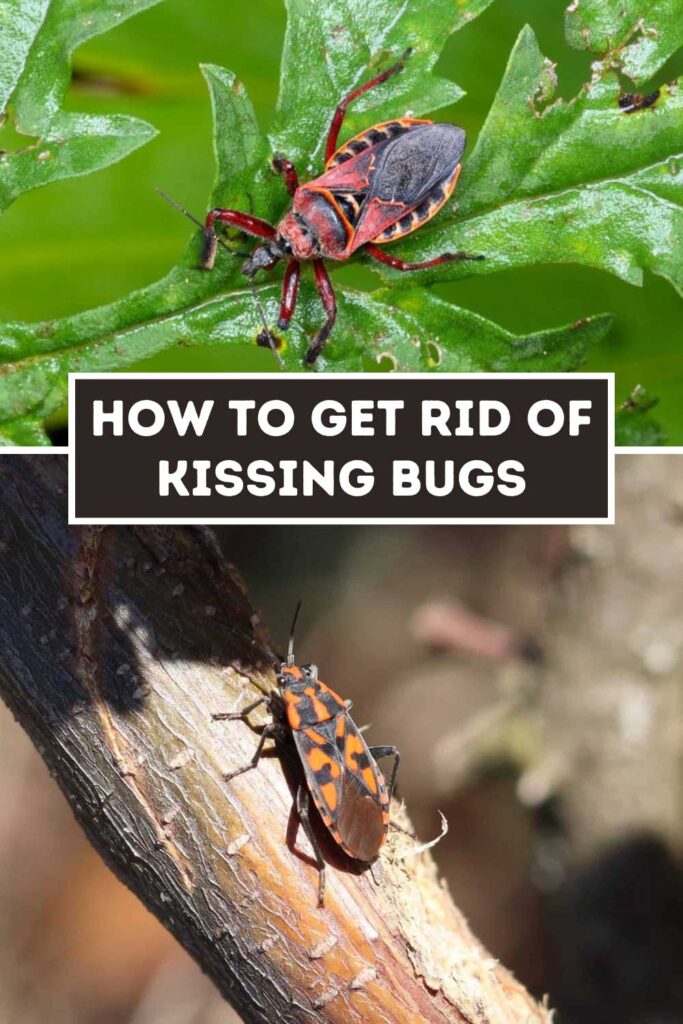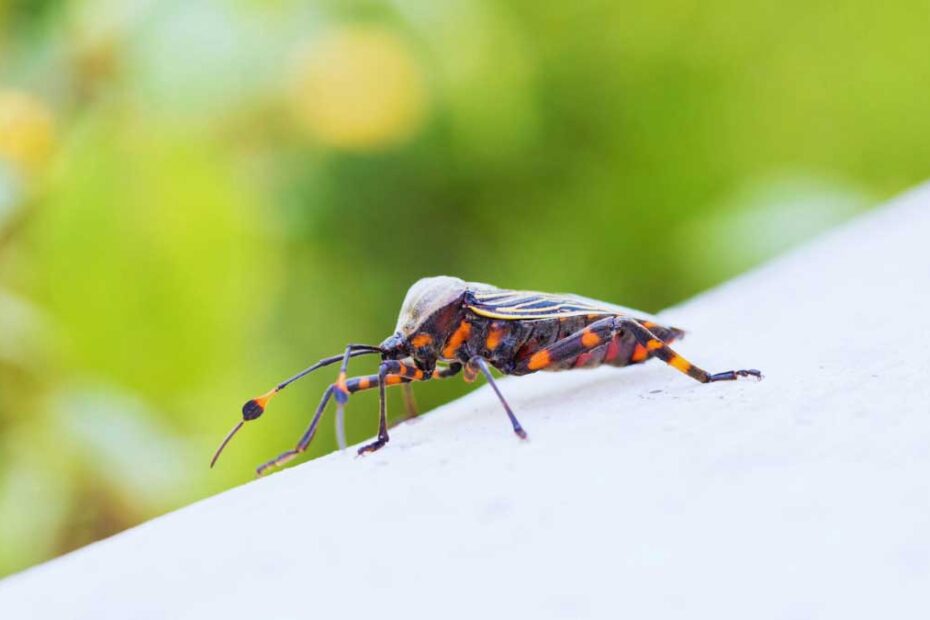Kissing bugs, also known as triatomine bugs, are more than just a nuisance—they’re a health risk. These nocturnal insects can transmit Chagas disease, posing a serious threat to you and your family. If you’ve spotted these unwelcome guests, it’s crucial to act swiftly.
Understanding how to eliminate kissing bugs effectively requires a combination of prevention and targeted treatments. In this guide, you’ll learn practical steps to safeguard your home and protect your loved ones from these dangerous pests.
Key Takeaways
- Health Risks: Kissing bugs can transmit Chagas disease, posing serious health risks including allergic reactions and secondary infections.
- Identification: Recognize kissing bugs by their oval, flat bodies, dark coloration with distinct markings, and their tendency to reside in cracks and outdoor areas.
- Preventive Measures: Implement home maintenance tips, manage your yard, and take precautions with pets to create barriers against kissing bugs.
- Effective Treatments: Use a combination of chemical treatments, natural remedies, and professional pest control services to eliminate kissing bugs effectively.
- Safety Practices: Follow personal protection tips and handle chemicals safely during treatment to ensure the health and safety of your household.

Understanding Kissing Bugs
Kissing bugs, also known as triatomine bugs, pose significant health risks, including the transmission of Chagas disease. Understanding these insects is crucial for effective prevention and control.
What Are Kissing Bugs?
Kissing bugs are nocturnal insects that belong to the Reduviidae family.
Key Characteristics:
- Appearance: Typically brown or black with red, orange, or yellow markings.
- Size: Ranges from 0.75 to 1.25 inches.
- Behavior: Feeds on the blood of mammals, birds, and reptiles.
- Habitat: Found in cracks and crevices in homes, animal kennels, and outdoor spaces.
These bugs are attracted to the carbon dioxide you exhale and tend to bite around the mouth or eyes. Recognizing their distinct features helps in identifying and eliminating them from your living spaces.
Risks Associated With Kissing Bugs
The primary risk kissing bugs pose is the spread of Chagas disease, caused by the parasite Trypanosoma cruzi.
- Chagas Disease: Symptoms can range from mild swellings to severe cardiac and digestive issues. Extended exposure can lead to long-term health complications.
- Allergic Reactions: Bites can cause severe allergic reactions in some individuals, including anaphylactic shock.
- Infections: Bites may lead to secondary bacterial infections if not properly treated.
If you suspect kissing bugs’ presence, take immediate action by consulting pest control professionals to mitigate the risks and protect your health.
Identifying Kissing Bugs
Recognizing kissing bugs, or triatomine bugs, is the first step in addressing an infestation. Accurate identification is crucial for effective control and prevention.
Physical Characteristics
Kissing bugs exhibit distinct physical traits:
- Shape: Oval, flat bodies
- Size: Range from 0.75 to 1.25 inches
- Coloration: Dark brown to black with red, orange, or yellow markings on the margins of their bodies
- Head: Elongated with a prominent, forward-pointed snout
- Antennae: Long and thin
- Wings: Half-membranous, half-leathery, lying flat over the back
Common Habitats
Kissing bugs often reside in areas close to potential food sources:
- Outdoor Locations: Under rocks, woodpiles, or in animal burrows
- Indoor Areas: Cracks in walls, beneath porches, and in rodent nests
- Rural Environments: Thatched roofs, open structures, or outbuildings
- Urban Settings: Near pet kennels, chicken coops, and in brush or stone piles
Signs of Infestation
Be alert for these indicators of kissing bug activity:
- Fecal Spots: Black or dark brown droppings near resting sites
- Exuviae: Shed skins found where bugs hide or travel
- Bite Marks: Red, itchy areas on skin, typically on the face, arms, or legs
- Visual Sightings: Actual bugs seen near suspected hiding spots or food sources
Promptly contact pest control professionals if you notice these signs to minimize health risks and ensure effective eradication.
Prevention Measures
Effective prevention measures help you avoid kissing bugs infesting your home. Focus on home maintenance, yard and garden management, and pet care to create a barrier against these insects.
Home Maintenance Tips
Regularly inspect your home for possible entry points. Fix any cracks or gaps in walls, windows, and doors. Install door sweeps to minimize gaps beneath doors.
- Seal Cracks and Gaps: Use caulking or weatherstripping to seal cracks, especially in the foundation, around windows, and doors.
- Install Screens: Ensure all windows and doors have tight-fitting screens without holes.
- Repair Leaks: Fix any leaking pipes or faucets to reduce humidity, which attracts insects.
Yard and Garden Management
Proper yard maintenance discourages kissing bugs from nesting near your home. Keep your yard tidy and limit hiding spots.
- Trim Vegetation: Regularly trim bushes, shrubs, and trees to prevent them from creating bridgeways to your home.
- Remove Debris: Clear away woodpiles, rock piles, and leaf litter where kissing bugs may hide.
- Use Outdoor Lighting Carefully: Reduce the use of outdoor lighting near entry points, as it attracts bugs.
Pet Care Precautions
Pets can inadvertently bring pests into your home. Manage their habitats to decrease risks.
- Regular Inspections: Check your pets and their sleeping areas for signs of kissing bugs, such as fecal spots or shed skins.
- Clean Pet Bedding: Frequently wash pet bedding in hot water to kill any present insects.
- Outdoor Pet Areas: Ensure outdoor pet kennels and bedding are elevated and placed away from your home’s perimeter.
Consistently implementing these measures fortifies your home against kissing bug infestations, keeping your living environment safe.
Effective Treatment Methods
To eliminate kissing bugs from your home, use a combination of chemical treatments, natural remedies, and professional pest control.
Chemical Treatments
Chemical treatments offer an immediate solution to kissing bug infestations. Use insecticides approved by the Environmental Protection Agency (EPA) for safety and effectiveness.
Key Insecticides:
- Pyrethroids: These are synthetic chemicals similar to natural pyrethrins found in chrysanthemum flowers. Effective on a variety of pests including kissing bugs.
- Neonicotinoids: Derived from nicotine, these target the nervous system of insects.
- Insect Growth Regulators (IGRs): These prevent bugs from maturing and reproducing, which helps control populations over time.
Application Tips:
- Apply insecticides directly to cracks, crevices, and any areas where bugs are spotted.
- Use residual sprays for long-lasting protection.
- Follow all safety instructions on the product label to ensure proper use.
Natural Remedies
Natural remedies offer eco-friendly alternatives to chemical treatments. These methods have fewer health risks and can be used along with other treatments.
Common Natural Solutions:
- Diatomaceous Earth: A natural powder that dehydrates insects on contact. Sprinkle in areas where kissing bugs are found.
- Essential Oils: Oils like neem, tea tree, and lavender repel kissing bugs. Mix with water and spray around entry points.
- Boric Acid: A natural insecticide that can be applied to similar areas as diatomaceous earth for effective bug control.
Using Natural Remedies:
- Regularly reapply natural powders and sprays as they can lose effectiveness over time.
- Monitor treated areas to assess the impact and adjust your methods as needed.
Professional Pest Control
When an infestation is severe, professional pest control services become your best option. Experts have the tools and knowledge to handle extensive infestations.
Advantages of Professional Services:
- Expert Assessment: Professionals can identify and assess the extent of an infestation.
- Specialized Equipment: Access to advanced tools and commercial-grade treatments not available to the general public.
- Customized Plans: Detailed strategies tailor-made to address specific problems in your home.
Choosing a Pest Control Service:
- Research companies with positive reviews and certified professionals.
- Request quotes and ask about the methods they plan to use.
- Ensure they provide follow-up visits to check for resurgences.
Employ these methods to create a comprehensive and effective approach to eliminating kissing bugs from your home.
Safe Practices During Treatment
To get rid of kissing bugs, it’s essential to follow safe practices during treatment. This involves taking personal protection measures and ensuring the safe handling of chemicals.
Personal Protection Tips
When dealing with kissing bugs, protecting yourself is crucial.
Long Sleeves and Pants: Wear long sleeves and pants to minimize skin exposure.
Gloves: Use gloves while handling insecticides or insect remnants.
Masks: Consider wearing masks if you are using strong chemicals.
Boots: Wear boots to prevent bugs from getting into your shoes.
Handling Chemicals Safely
Using chemicals requires caution to ensure safety.
Read Labels: Always read and follow the instructions on pesticide labels.
Ventilation: Ensure proper ventilation in the treated area to avoid inhaling fumes.
Storage: Store chemicals in a secure place, out of reach of children and pets.
Disposal: Dispose of chemical containers according to local regulations.
Cleaning: Wash hands and any exposed skin thoroughly after handling chemicals.
By implementing these safe practices, you can effectively control and eliminate kissing bugs while safeguarding your health.
Conclusion
Taking swift action against kissing bugs is essential for protecting your health and well-being. By understanding their habits and habitats, you can effectively prevent and control these pests. Implementing home and yard maintenance tips, along with regular pet inspections, creates strong barriers against infestations.
Combining chemical treatments with natural remedies offers a balanced approach to elimination. For severe cases, professional pest control provides the expertise and equipment needed for thorough eradication. Prioritizing safe practices ensures both effective treatment and personal safety.
Employ these strategies to keep your home free from kissing bugs and enjoy a safer, healthier environment.
Frequently Asked Questions
What are kissing bugs?
Kissing bugs, also known as triatomine bugs, are nocturnal insects that feed on the blood of mammals, birds, and reptiles. They are primarily known for their ability to transmit Chagas disease.
What diseases do kissing bugs transmit?
Kissing bugs can transmit Chagas disease, a potentially serious illness caused by the parasite Trypanosoma cruzi.
How do I identify a kissing bug?
Kissing bugs are oval, flat-bodied insects ranging from 0.75 to 1.25 inches in size. They are typically dark brown to black with red, orange, or yellow markings.
Where are kissing bugs commonly found?
Kissing bugs are often found in outdoor locations like under rocks and woodpiles and indoor areas such as cracks in walls and rodent nests.
What are the signs of a kissing bug infestation?
Signs include fecal spots, shed skins, bite marks, and seeing the bugs themselves.
How can I prevent a kissing bug infestation in my home?
Preventive measures include sealing cracks, installing screens, repairing leaks, trimming vegetation, removing debris, and inspecting pets regularly.
What chemical treatments are effective against kissing bugs?
Chemical treatments include pyrethroids, neonicotinoids, and insect growth regulators (IGRs). These chemicals should be used following safety guidelines.
Are there natural remedies for treating kissing bugs?
Yes, natural remedies like diatomaceous earth, essential oils, and boric acid can be used alongside chemical treatments for a more eco-friendly approach.
When should I seek professional pest control for kissing bugs?
Professional pest control should be considered for severe infestations. Experts offer specialized equipment and customized treatment plans for effective elimination.
What safety measures should I follow during kissing bug treatment?
Wear long sleeves, gloves, masks, and boots. Read chemical labels for proper handling, ensure good ventilation, and follow proper storage and disposal guidelines for safety.
